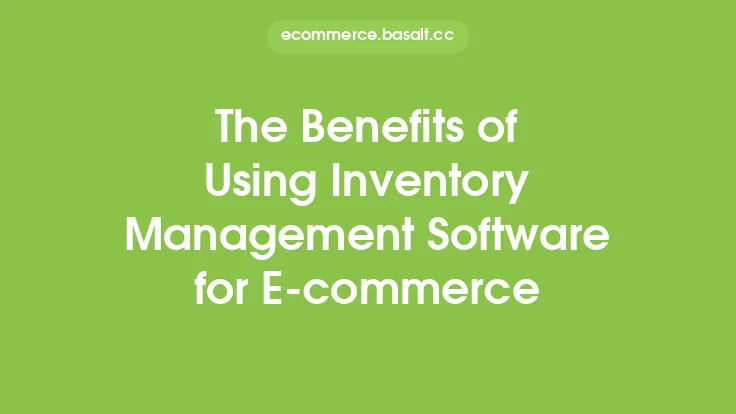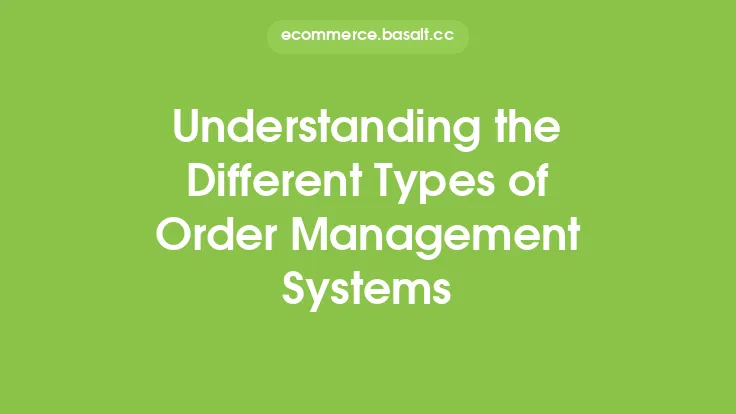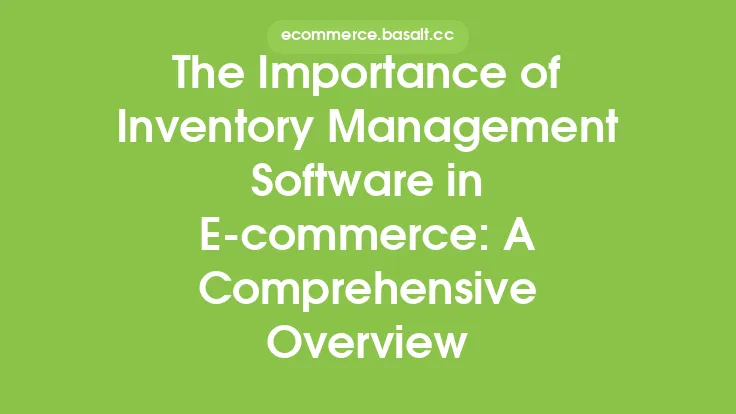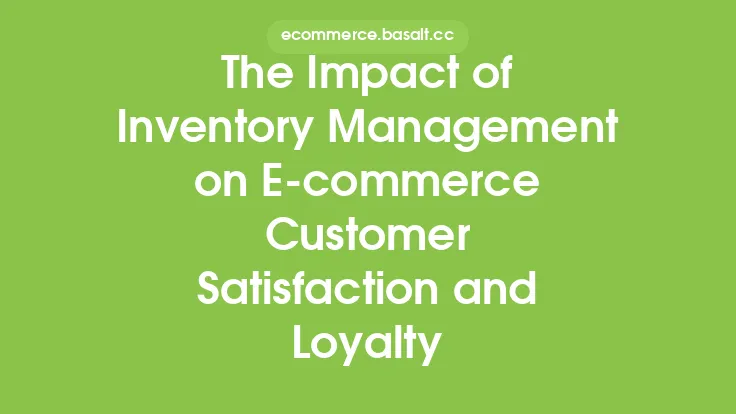Effective inventory management is crucial for the success of any e-commerce business. It involves the process of planning, organizing, and controlling the flow of goods from raw materials to finished products. Inventory management is essential to ensure that the right products are available at the right time, in the right quantities, and at the right cost. In this article, we will delve into the basics of stock control, exploring the fundamental principles and concepts that underpin effective inventory management.
Introduction to Inventory Management
Inventory management is a critical component of e-commerce operations, as it directly impacts the ability of a business to meet customer demand, manage costs, and maintain profitability. At its core, inventory management involves the coordination of supply and demand, ensuring that the right products are available to meet customer orders while minimizing excess stock and waste. Effective inventory management requires a deep understanding of the business, its products, and its customers, as well as the ability to analyze data and make informed decisions.
Types of Inventory
There are several types of inventory that e-commerce businesses need to manage, including:
- Raw materials: These are the components used to manufacture products, such as fabrics, plastics, or electronics.
- Work-in-progress: This refers to products that are in the process of being manufactured or assembled.
- Finished goods: These are the completed products that are ready for sale.
- Packaging materials: These include boxes, bags, and other materials used to package and ship products.
- Spare parts: These are components used to repair or maintain products, such as replacement batteries or filters.
Understanding the different types of inventory is essential to developing an effective inventory management strategy.
Inventory Costs
Inventory costs are a significant component of e-commerce operations, and can include:
- Holding costs: These are the costs associated with storing and maintaining inventory, such as warehouse rent, utilities, and insurance.
- Ordering costs: These are the costs associated with placing orders for inventory, such as shipping and handling fees.
- Stockout costs: These are the costs associated with running out of stock, such as lost sales and damaged customer relationships.
- Obsolete inventory costs: These are the costs associated with inventory that is no longer needed or is obsolete, such as disposal fees and write-offs.
Understanding inventory costs is critical to developing an effective inventory management strategy, as it allows businesses to make informed decisions about inventory levels and minimize waste.
Inventory Management Techniques
There are several inventory management techniques that e-commerce businesses can use to manage their stock levels, including:
- Just-in-time (JIT) inventory management: This involves ordering and receiving inventory just in time to meet customer demand, minimizing excess stock and waste.
- Economic order quantity (EOQ) inventory management: This involves ordering inventory in quantities that minimize total inventory costs, taking into account factors such as demand, lead time, and ordering costs.
- First-in, first-out (FIFO) inventory management: This involves selling or using the oldest inventory first, to minimize waste and obsolescence.
- Last-in, first-out (LIFO) inventory management: This involves selling or using the most recently received inventory first, to maximize profits and minimize waste.
Understanding these techniques is essential to developing an effective inventory management strategy, as it allows businesses to choose the approach that best meets their needs.
Inventory Management Metrics
There are several inventory management metrics that e-commerce businesses can use to measure their performance, including:
- Inventory turnover: This measures the number of times inventory is sold and replaced within a given period, providing insight into inventory levels and demand.
- Days inventory outstanding (DIO): This measures the average number of days inventory remains in stock, providing insight into inventory levels and turnover.
- Fill rate: This measures the percentage of customer orders that are filled from existing inventory, providing insight into inventory levels and availability.
- Stockout rate: This measures the percentage of customer orders that cannot be filled due to stockouts, providing insight into inventory levels and availability.
Understanding these metrics is essential to developing an effective inventory management strategy, as it allows businesses to track their performance and make informed decisions.
Best Practices for Inventory Management
There are several best practices that e-commerce businesses can follow to ensure effective inventory management, including:
- Conducting regular inventory audits to ensure accuracy and minimize discrepancies.
- Implementing a robust inventory management system to track inventory levels and movement.
- Developing a comprehensive inventory management strategy that takes into account factors such as demand, lead time, and ordering costs.
- Providing training and support to inventory management staff to ensure they have the skills and knowledge needed to perform their jobs effectively.
- Continuously monitoring and evaluating inventory management performance, making adjustments as needed to optimize results.
By following these best practices, e-commerce businesses can ensure that their inventory management operations are running smoothly and efficiently, minimizing waste and maximizing profitability.





